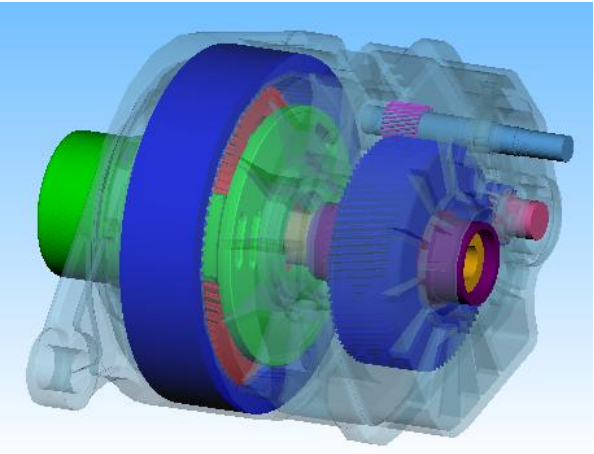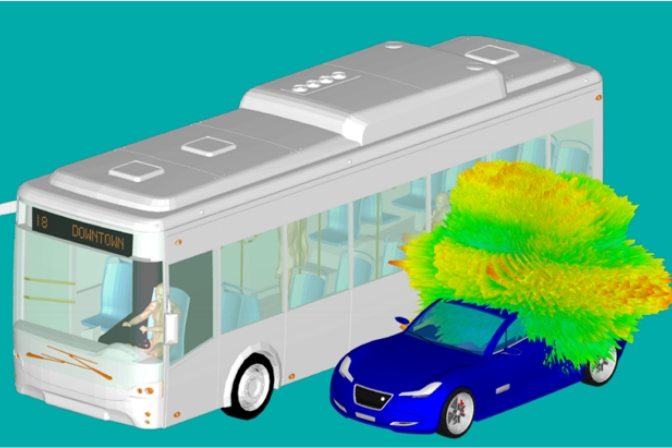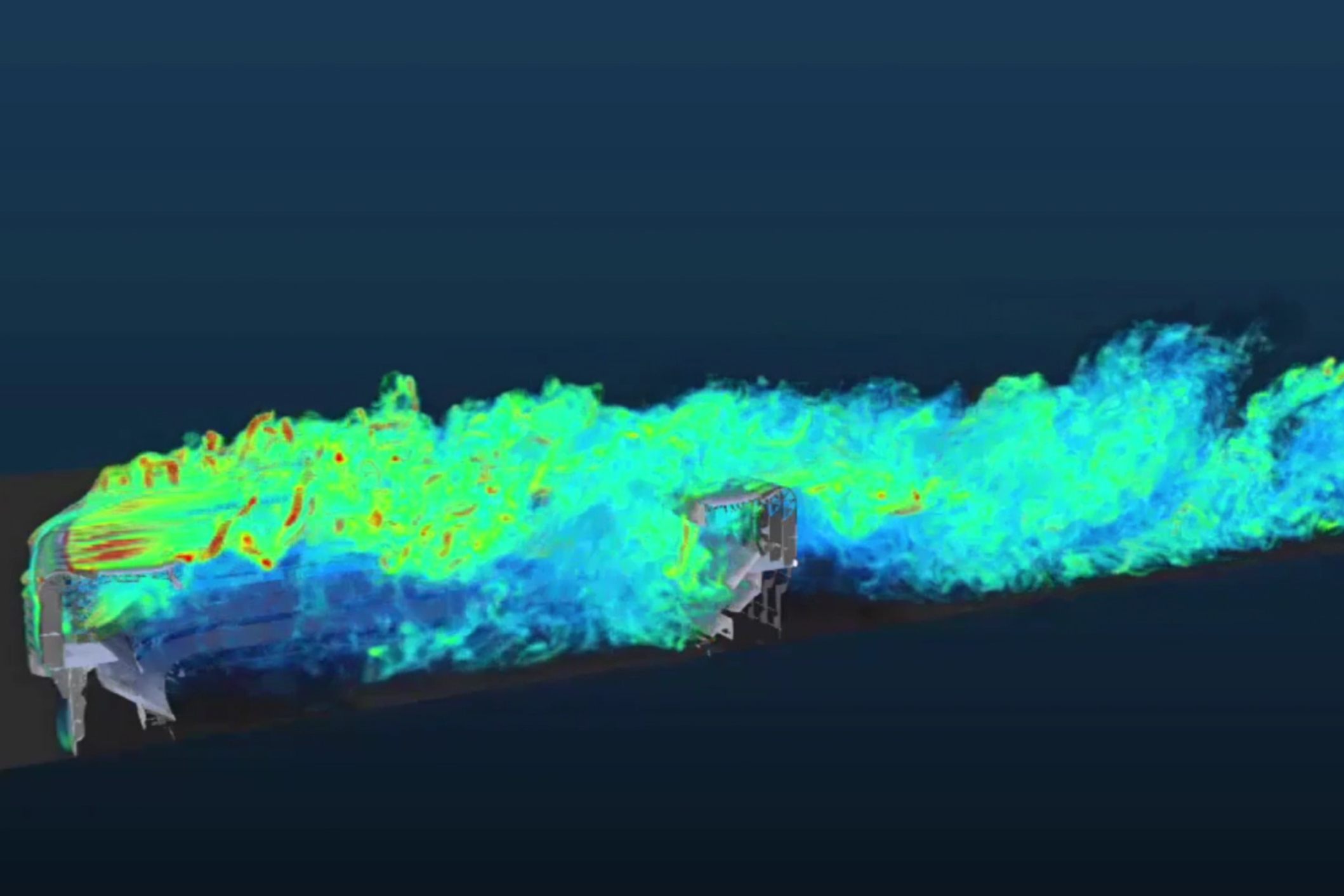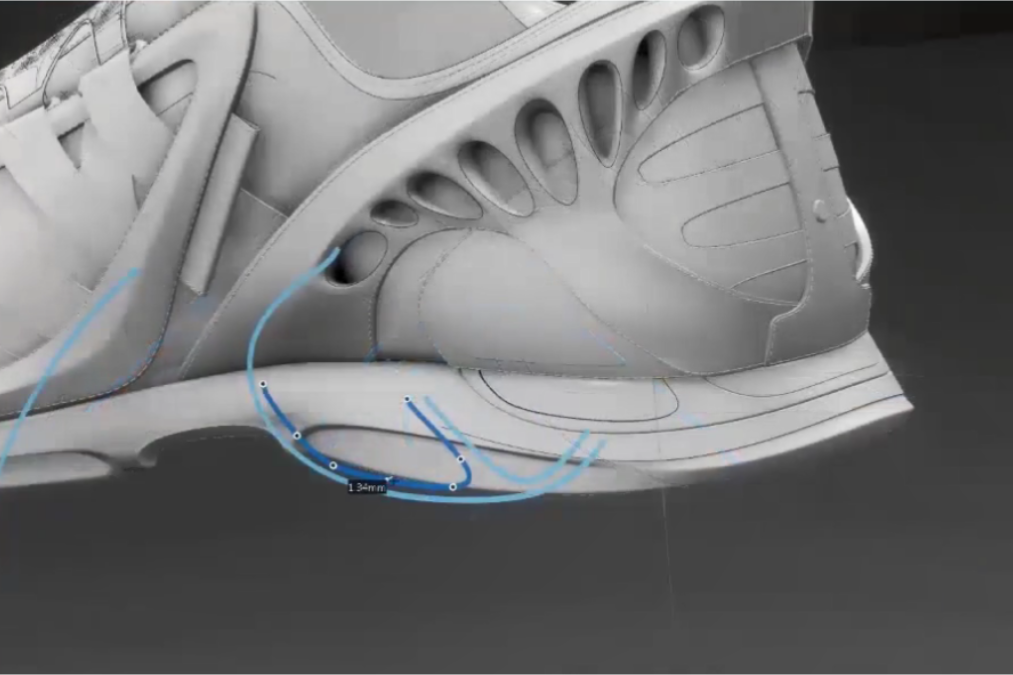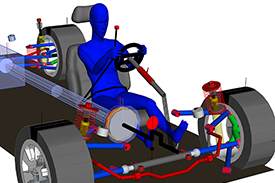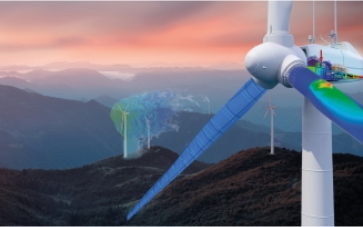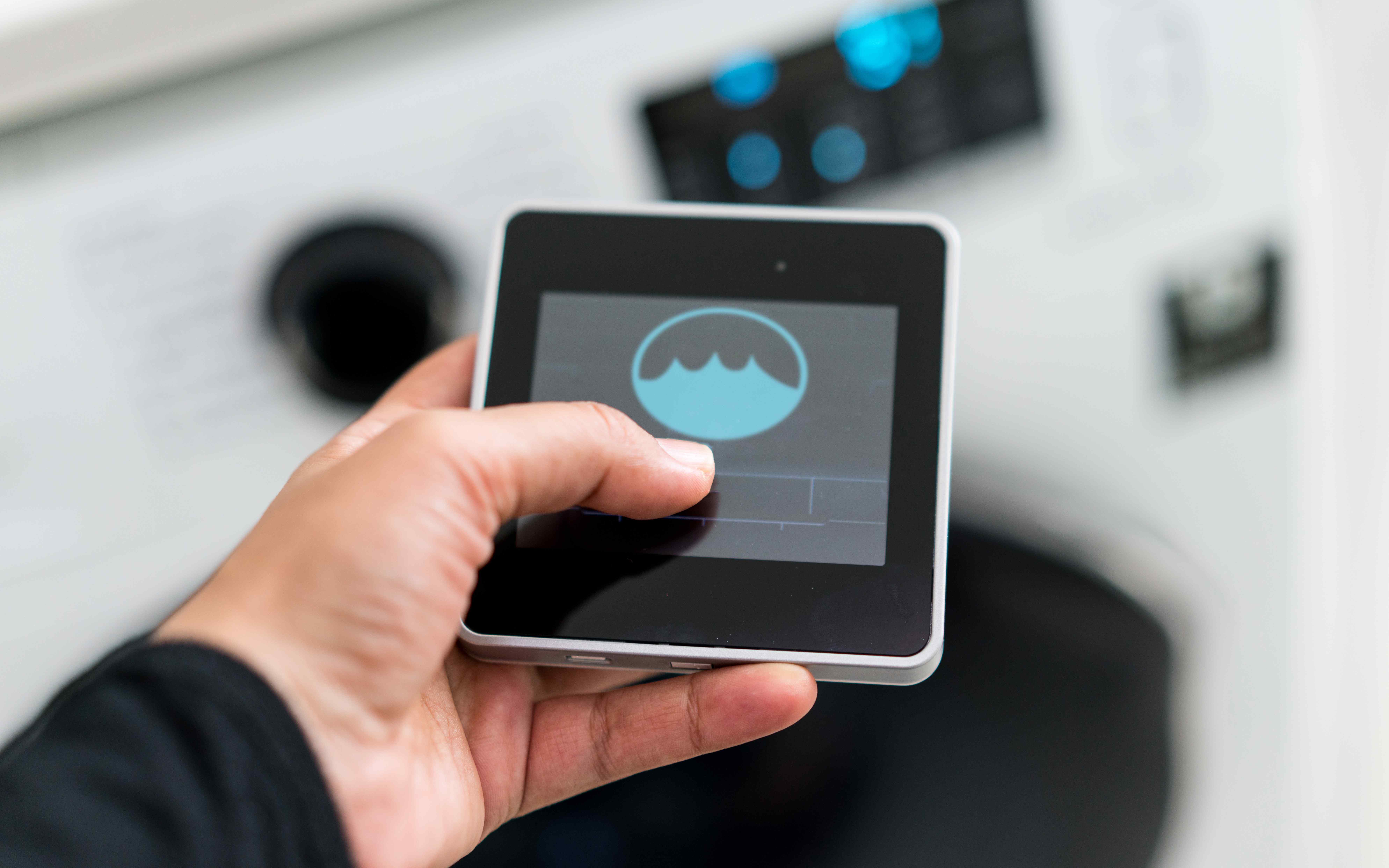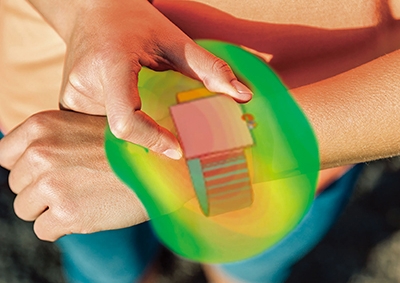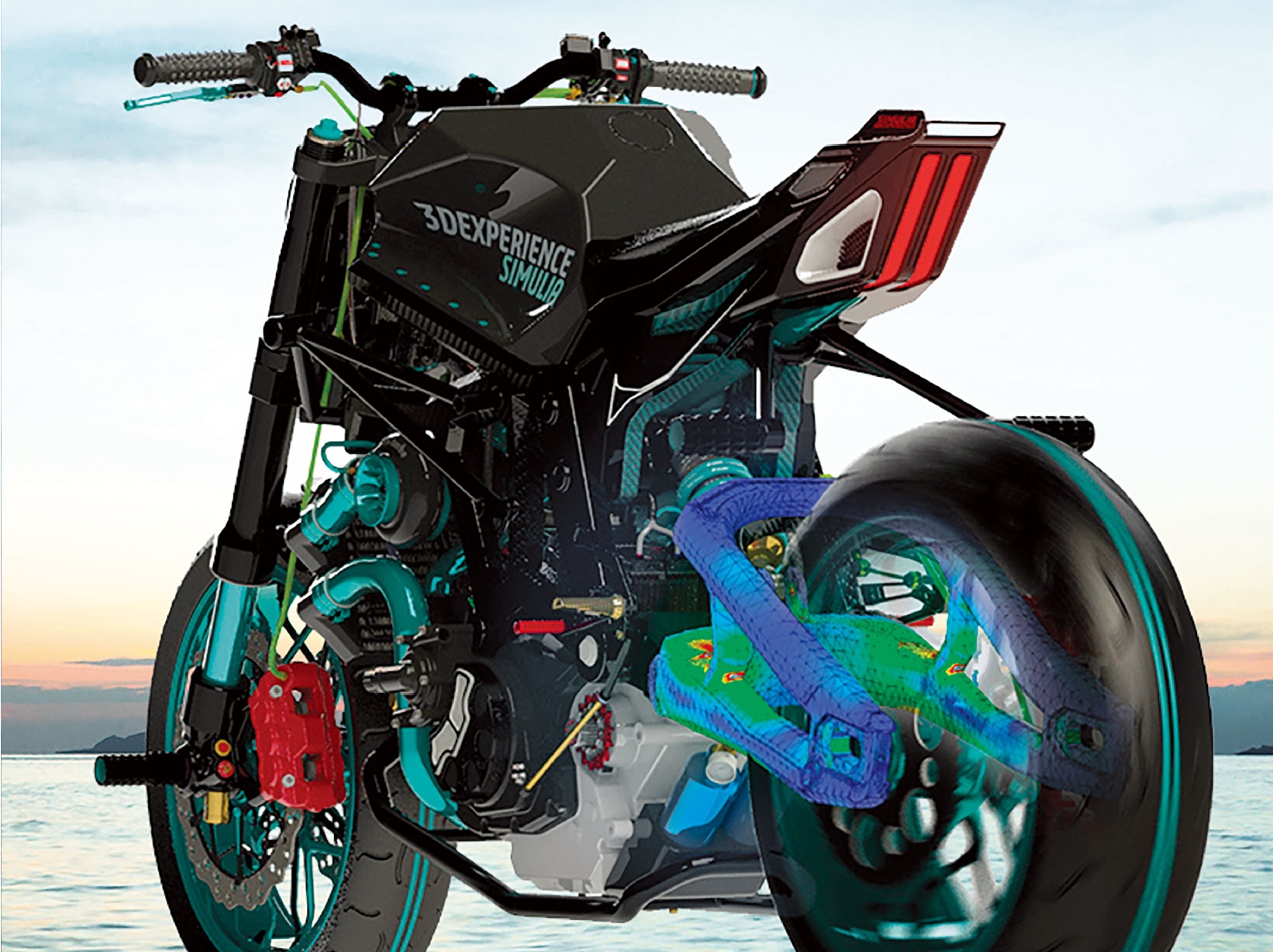

abaqus软件分析指南216:解决融合困难-博天堂登陆
解决融合困难
增材制造工艺的热机械模拟通常是非线性的,这是由于温度相关的材料行为、渐进式元件激活或其他因素造成的。下文将讨论常见的趋同问题以及如何解决这些问题的建议。
在传热分析中,材料特性的非线性往往会引起收敛困难如果材料的电导率与温度相关,则方程组是不对称的。在这种情况下,使用非对称矩阵存储和求解方案(见abaqus软件中的矩阵存储和求解方案)可能有助于提高收敛性。
·当考虑潜热效应时,会在分析中引入严重的非线性,并对收敛性产生负面影响。abaqus软件提供了通过指定平滑过渡或延长固相线-液相线温度区间来减少非线性的选项(请参阅定义平滑潜热过渡)。
在应力分析中,在单元的激活过程中会遇到收敛困难。·元素在激活之前可能会过度扭曲,造成收敛困难。在这种情况下,您应该指定非活动元素跟随变形,以防止过度的元素变形(请参见控制非活动元素的行为)。
一个单元在激活时经历的初始热应变(由于当前温度和指定初始温度之间的差异)可能会导致收敛困难,不能通过减少时间增量来解决。为了解决这个问题,abaqus软件提供了一个选项,在一段时间内斜坡的热应变,而不是应用他们瞬间激活(见应用初始热应变)。斜坡热应变会影响分析结果的准确性。例如,当激活下一层元件时,如果一层中的元件的热应变没有完全倾斜,则新激活的元件的无应变配置与热应变完全倾斜时的情况不同。您应该使用一个小于处理一层所需时间的斜坡时间常数。
如果材料定义包括塑性,分析可能会由于用于加速求解的外推方案而过度迭代。
您可以通过关闭外推来防止此问题(请参见abaqus软件中的增量)。
输入文件模板
下面的模板显示了传热分析heat.inp的输入:
*heading
…
** choose the uncoupled heat transfer element type
*element, type=dc3d8
** define material deposition motion and/or heat source scan path
*event series type
*event series
** define additional information for material deposition and/or moving heat sources
*parameter table type
*property table type
*table collection
*parameter table
*property table
** define elements that can be activated during an analysis
*element progressive activation
…
*physical constants, absolute zero=qz
, stefan boltzmann=s
*initial conditions, type=temperature
…
*step, unsymm=yes
*heat transfer
…
** turn on progressive element activation in the step
*activate elements
table collection for material deposition (if defined)
** apply thermal loads and boundary conditions
*boundary
data line to define nonzero boundary conditions on temperature degree of freedom
*film
element number or element set name, ffs or ffsnu, q0
, h
*radiate
element number or element set name, rfs, q0
, ò
*dflux
element set name, mbfnu, blank entry, table collection for a heat source (if defined)
…
** write all nodal temperatures to the output database file, heat.odb
*output, field
*node output
nt
*end step
下面的模板显示了后续静态结构分析的输入:
*heading
…
** choose the continuum element type compatible with the heat transfer element type used
*element, type=c3d8
…
** define material deposition motion
*event series type
*event series
** define additional information for material deposition
*parameter table type
*property table type
*table collection
*parameter table
*property table
** define elements that can be activated during an analysis
*element progressive activation
…
*initial conditions, type=temperature
*boundary
data lines to specify zero-valued boundary conditions on displacement degree of freedom
…
*step, extrapolation=no
*static
…
** read in all nodal temperatures from the output database file, heat.odb
*temperature, file=heat.odb
** turn on progressive element activation in the step
*activate elements
table collection for material deposition (if defined)
** apply structural loads and boundary conditions
…
*end step
温馨提示:
此文档为达索官方英文文档翻译,尽管我们已经尽力确保准确性,但在翻译过程中可能会有一些错误或细微差别。如果想要了解官方原版,可联系客服进行索取。
-
2024-05-24
-
2024-05-24
-
[abaqus] abaqus提交作业后一直中断是什么原因?
2024-05-24
-
[有限元知识] abaqus软件分析指南382:在静态或特征频率分析中指定
2024-05-24
-
[有限元知识] abaqus软件分析指南381:激活伴随灵敏度分析
2024-05-24
-
[有限元知识] abaqus软件分析指南380:伴随设计灵敏度分析
2024-05-24
-
[有限元知识] abaqus软件分析指南379:dsa918博天堂官网的解决方案局限性
2024-05-23
-
[有限元知识] abaqus软件分析指南378:dsa918博天堂官网的解决方案的准确性
2024-05-23
-
[有限元知识] abaqus软件分析指南377:线性扰动步长的数字减影算法
2024-05-23
-
[有限元知识] abaqus软件分析指南376:指定响应和请求响应
2024-05-22
-
2023-08-24
-
[abaqus] abaqus如何建模?abaqus有限元分析教程
2023-07-07
-
2023-08-29
-
[abaqus] 有限元分析软件abaqus单位在哪设置?【操作教程】
2023-09-05
-
[abaqus] 如何准确的评估真实行驶工况条件下的空气动力学性能
2020-11-19
-
[abaqus] abaqus单位对应关系及参数介绍-abaqus软件
2023-11-20
-
[abaqus] abaqus里面s11、s12和u1、u2是什么意思?s和
2023-08-30
-
2023-07-26
-
[abaqus] abaqus最新版本好不好? 2022x新功能介绍第一弹
2022-04-28
-
[abaqus] abaqus软件教程|场变量输出历史变量输出
2023-07-18
-
[有限元知识] abaqus软件分析指南382:在静态或特征频率分析中指定
2024-05-24
-
[有限元知识] abaqus软件分析指南381:激活伴随灵敏度分析
2024-05-24
-
[有限元知识] abaqus软件分析指南380:伴随设计灵敏度分析
2024-05-24
-
[有限元知识] abaqus软件分析指南379:dsa918博天堂官网的解决方案局限性
2024-05-23
-
[有限元知识] abaqus软件分析指南378:dsa918博天堂官网的解决方案的准确性
2024-05-23
-
[有限元知识] abaqus软件分析指南377:线性扰动步长的数字减影算法
2024-05-23
-
[有限元知识] abaqus软件分析指南376:指定响应和请求响应
2024-05-22
-
[有限元知识] abaqus软件分析指南375:直接设计灵敏度分析产品:a
2024-05-22
-
[有限元知识] abaqus软件分析指南374:设计敏感性分析
2024-05-22
-
2024-05-21
地址: 广州市天河区天河北路663号广东省机械研究所8栋9层 电话:020-38921052 传真:020-38921345 邮箱:thinks@think-s.com


博天堂登陆 copyright © 2010-2023 广州思茂信息科技有限公司 all rights reserved. 粤icp备11003060号-2

